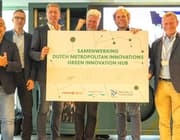Gartner says Enterprise Architecture Is Key to Driving Digital Strategy
CIOs are increasingly looking to enterprise architecture (EA) to help drive their digital strategy, according to Gartner, Inc. Fifty-two per cent of respondents in Gartner's 2013 CEO and Senior Executive Survey said their organisations have a digital strategy. Analysts said that digital technologies (what Gartner terms the Nexus of Forces — mobile, social media, big data and analytics — and the Internet of Things) create new opportunities for innovative business models.
"Senior business executives are challenging CIOs and their IT organisations to be at the front of digital strategy, identifying innovative new business models and technologies, and getting more business value out of each technology investment," said Marcus Blosch, research vice president. "Enterprise architects can provide unique capabilities to help CIOs develop a new agenda for 'hunting and harvesting' in a digital world."
Mr Blosch said that organisations are looking to grow and improve efficiency of their operations, creating new demands on CIOs and EA.
"With the global economy still struggling, enterprise architects around the world will need to use EA to help drive growth and innovation, while at the same time identifying opportunities for performance improvement and cost cutting at a time when IT budgets are flat," said Mr Blosch. "Given these factors, CIOs must extend IT's performance profile beyond tending, to hunting and harvesting for digital value. For enterprise architects, particularly those who sit within the IT organisation, this is a great opportunity to move EA into a more strategic role. Business-outcome-driven EA is integral to achieving each of these areas to provide insight and support decision making. The EA team currently has the opportunity to become more strategic by aligning itself to support the CIO and the organisation."
It is often hard to see where a new technology or idea applies, and what difference it will make. However, EA supports both hunting and harvesting by linking new technologies and innovations to the strategy and future-state business capabilities. EA teams can also do technology tracking and create innovation management processes to support hunting. Harvesting is driven through techniques such as business capability modelling, which provides a basis for identifying and delivering outcomes. Capabilities created in one area of the business can be harvested in others, using EA to identify where potential synergies exist. Hunting and harvesting rely on good relationships with business executives and enterprise architects can use business-outcome-driven EA to build these relationships.
A further challenge for CIOs and enterprise architects is how to build the competencies needed to support these new roles of hunting and harvesting. Within EA in particular, there is an increasing emphasis on business and information architecture skills, which are often hard to find. Key EA competencies include business strategy formulation, business innovation and business strategy execution, as well as behavioural skills — such as the ability to establish and maintain good working relationships with a wide range of stakeholders. This represents a significant opportunity for enterprise architects to make their role more strategic, by focusing on business growth and innovation, and by using business-outcome-driven EA to support these areas.
These competencies must be combined with more-agile approaches to innovation, such as being able to run experiments. The ability to identify an opportunity, quickly set it up and pilot it, assess the results and decide to expand into another cycle or kill off is needed to support both hunting and harvesting. Enterprise architecture can support this by providing the enabling and diagnostics deliverables as part of the hypothesis formation, setting up the pilot and assessing the results.
More detailed analysis is available in the report "Gartner's 2013 CIO Survey Provides Keys to EA Success." The report is available on Gartner's web site at .
This research is part of the Gartner special report "The Nexus of Forces: Social, Mobile, Cloud and Information." The report is available on Gartner's web site at http://www.gartner.com/technology/research/nexus-of-forces/. . It includes links to reports, webinars and video commentary that examine the impact of the Nexus of Forces on organisations.
Gartner analysts will examine the Nexus of Forces in more detail at Gartner Symposium/ITxpo 2013.




